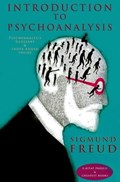Development of psychoanalysis: Charcot demonstrates hypnosis on a "hysterical" patient, "Blanche" (Blanche Wittmann). Charcot questioned his own work on hysteria towards the end of his life. In October 1885, Freud went to Paris on a fellowship to study with Jean-Martin Charcot, a renowned neurologist who was conducting scientific research into hypnosis. He was later to recall the experience of this stay as catalytic in turning him toward the practice of medical psychopathology and away from a less financially promising career in neurology research. Charcot specialized in the study of hysteria and susceptibility to hypnosis, which he frequently demonstrated with patients on stage in front of an audience. In this Illustrated psychology series, our the first book volume includes that Freud's eventually establishes in the course of his clinical practice that a more consistent and effective pattern of symptom relief could be achieved, without recourse to hypnosis, by encouraging patients to talk freely about whatever ideas or memories occurred to them. In addition to this procedure, which he called "free association", Freud found that patient's dreams could be fruitfully analyzed to reveal the complex structuring of unconscious material and to demonstrate the psychic action of repression which underlay symptom formation. By 1896, Freud had abandoned hypnosis and was using the term "psychoanalysis" to refer to his new clinical method and the theories on which it was based... Illustrated by Murat Ukray, Copyright by E-Kitap Projesi

